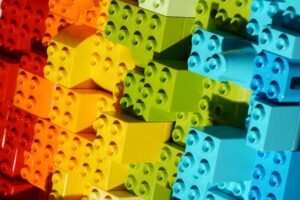Selective Laser Sintering (SLS) is an advanced additive manufacturing technology that has transformed the world of 3D printing. This innovative process has enabled industries such as aerospace, automotive, medical, and consumer products to create complex, functional parts with unmatched precision and strength. In this blog post, we will explore the fascinating world of SLS 3D printing, discuss its core principles, advantages, and applications, and compare it to one of the most well known 3D printing methods: Fused Deposition Modeling (FDM).
Understanding Selective Laser Sintering (SLS):
Selective Laser Sintering (SLS) is an additive manufacturing technique that uses a high-powered laser to fuse powdered material, layer by layer, into a solid, three-dimensional object. The process begins with a CAD (Computer-Aided Design) model of the desired part, which is then sliced into thin layers. The SLS printer spreads a thin layer of powdered material, typically a plastic, ceramic, or metal, onto the build platform. The laser selectively sinters, or fuses, the powder particles according to the CAD model, creating a single layer of the object. This process is repeated layer by layer until the entire object is complete.
SLS vs. FDM 3D Printing:
While both SLS and Fused Deposition Modeling (FDM) are additive manufacturing technologies, they differ in their approaches to creating 3D printed objects. FDM is a popular and widely used 3D printing method that involves the extrusion of a thermoplastic material, layer by layer, to build the object. Here are some key differences between SLS and FDM:
- Support structures: SLS does not require support structures, as the unsintered powder surrounding the object acts as a support during the printing process. In contrast, FDM often requires support structures for overhanging or complex geometries, which must be removed post-printing.
- Surface finish: SLS-printed parts can have a smoother surface finish and finer details compared to FDM-printed parts. FDM parts may require post-processing, such as sanding or polishing, to achieve a smooth surface.
- Strength and durability: SLS-printed parts generally exhibit better mechanical properties and durability compared to FDM-printed parts, making them ideal for functional prototypes and end-use applications.
- Build volume: FDM printers typically have larger build volumes than SLS printers, making them suitable for larger objects.
Ideal Applications for SLS and FDM:
SLS is ideal for applications that require complex geometries, maximum strength, and durability. Some examples include:
- Aerospace: lightweight, high-strength components for aircraft and spacecraft
- Automotive: custom parts, lightweight structures, and functional prototypes
- Medical: patient-specific implants, surgical guides, and prosthetics
- Consumer products: intricate jewelry designs, customized electronics enclosures
FDM, on the other hand, is better suited for applications that demand lower costs, larger build volumes, or rapid prototyping with thermoplastic materials. Examples include:
- Education: learning aids, classroom models, and student projects
- Prototyping: concept models, functional testing, and product development
- Art and design: sculptures, decorative items, and artistic creations
- DIY and hobby: custom tools, gadgets, and home improvement projects
- Bulk production: lower costs for same part turnaround rate as SLS
In conclusion, Selective Laser Sintering (SLS) 3D printing is an advanced additive manufacturing technology that offers numerous advantages over traditional manufacturing methods and other 3D printing techniques such as FDM. Its design freedom, material versatility, and high-quality output make it an indispensable tool for industries across the globe. As SLS technology continues to evolve, we can expect its adoption to grow, driving innovation and transforming the future of manufacturing.
When choosing between SLS and FDM 3D printing methods, it is crucial to consider the specific requirements and desired outcomes of your project. SLS is ideal for applications that demand high strength, durability, and complex geometries, while FDM is more suitable for lower-cost projects, rapid prototyping, and larger build volumes. By understanding the differences between these two technologies and their ideal applications, you can make informed decisions that will help you achieve the best results for your 3D printing projects. If you’d like to discuss your project to determine the best technology for your needs, please reach out to us! We’d love to chat about your project.


